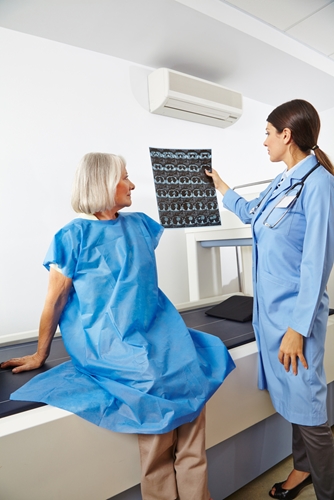It is general knowledge that too much radiation is a bad thing. Previous studies have shown that there is a correlation between high levels of radiation and patients' risks of cancer. Medical imaging exams have dose limits for a reason. However, a new study shows that radiation may not be as dangerous as scientists once thought, and people may see little to no negative effects when the appropriate dosage is used.
Radiation not as harmful in low doses
In a paper published in Technology in Cancer Research & Treatment, researchers from the Loyola University Health System reported that previous claims of heightened cancer risks from all doses of radiation are misleading. People are only in danger of high exposure while the small amounts used in diagnostic imaging are relatively harmless.
Past research used the "linear no-threshold" model, which states that all doses of radiation carry the same risks. Using that system, smaller amounts are no safer than the larger ones. However, the authors believe that the human body can heal any damage caused by low doses of radiation. The mutation rate caused by environmental radiation is 2.5 million times lower than the body's own rate, suggesting the minimal radiation used in medical imaging would not be harmful, according to the article. If true, this would make the linear no-threshold model invalid or, at the very least, exclusive to certain dosages.
The body's self-repairing properties
The Loyola University Health System researchers are not the first ones to suggest the human body's self-healing abilities. The World Health Organization reported that any dose that is low or given over a long period of time gives cells the chance to repair themselves, and the United Nations Scientific Committee on the Effects of Atomic Radiation claimed that there is no evidence of negative health effects from amounts under 10 millisieverts. Even the most powerful diagnostic imaging test is only 8 mSv.
The radiation doses in radiography are well within the bounds of harmless amounts, and low-dose exams cut those measurements in half. While there is a chance of the cells repairing incorrectly to cause long-term effects, that risk is relatively low in adults, the WHO claimed. The threat is higher in children, who are more sensitive to radiation. However, damage regularly occurs in cells because of temperature changes and oxidation processes, the UNSCEAR explained. The body is easily able to recover from those minor injuries, which may show that it could do the same for the low doses of radiation involved in digital imaging.
While exposure to large amounts of radiation should be kept at a minimum, the use of low doses could provide harm-free insight into medical conditions.
Contact Viztek for more information.
Ronny Bachrach
Latest posts by Ronny Bachrach (see all)
- Konica Minolta Debuts First-of-Its-Kind Digital U-Arm System at AHRA - July 27, 2016
- Researchers Detect Signs Of Stroke Risk Using MRI - June 27, 2016
- Imaging Biz: Q&A with David S. Channin MD: How to Make PACS Patient Centered - June 22, 2016










